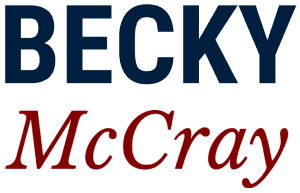How other towns do it
Last week we talked about the behavior changes that Idea Friendly promotes: from Formal to Informal, from Control to Chaos, from a Few to a Crowd, from Deciding to Testing, from Isolated to Connected, from Big to Small, from Failure is Bad to Failure is Good.
This week, three examples crossed my path that I’d like to share.
The first came from Catherine Sak, with the Texas Downtown Association. She shared a news story about an artist who wanted to start painting murals in her downtown. In that story, there was a conversation that went like this:
Artist: “I’d like to paint a mural on that building. What’s the design review process?”
Main Street design committee: “Talk to the building owner.”
That’s exactly what I’m talking about. It’s not like a mural is forever, or has to comply with your personal taste. Maybe you risk an ugly mural if no one controls what gets painted. But maybe you’d get a lot more experimental art that addressed critical community issues. Let go of that control. From Control to Chaos. Beautiful chaos.
The second one was in the Engaging Cities newsletter. The headline of this story was “Go where they are, not where you want them to be.” Albert Lea, Minnesota, ran a survey of residents. They got some less than positive feedback from specific wards, so the mayor, city manager and assistant manager started going door to door in those wards. They introduced themselves, took notes of anything people told them needed fixed, and left a number in case people thought of anything else. And that’s just one way they started reaching out. Read all the ways they are trying to better connect with locals. It’s a perfect illustration of going from Isolated to Connected.
The third came from Kirk Dixon, with Grow McCook in Nebraska. He replied last week to share the “30 under 30” project that has McCook looking 30 years into the future. They’ve drawn together the big formal organizations and asked them to do something unusual: share what they are planning for the next 30 years. When they don’t share information, they all miss opportunities. Together, they’ve identified the top 30 capital projects McCook is planning to complete within the next 30 years, and they’re telling everyone about it. Their goal is to brief 100% of everyone in town in four months.
“30 under 30 is not a secret, in fact, just the opposite. We want everyone in our community; across the state (and abroad) to know what we’re working on and how we’re doing. We want others enthusiastically sharing our story and we want individuals who are committed and passionate about growing rural America involved and helping us move forward.”
It’s an example of how even formal organizations can go from Isolated to Connected.
What examples have you seen? Go back an read over the behavior changes you’re looking for. Then think about it, hit reply and tell me what you’ve seen. I read every single email you send me.
Keep shaping the future of your town,
Becky
PS – Oklahoma friends, I’m excited to have a chance to talk about filling empty buildings here in Oklahoma, January 23, 2017. The event is in Stillwater, but anyone can attend. Also, our friend Dave Shideler will talk about the new Census Business Building Tools. Join us! And spread the word around. I’d love to see you all there!
